Cat exercises refer to various physical activities and playful interactions designed to engage your cat’s mind and body. It is crucial for your cat’s health, preventing obesity, keeping your cat supple, agile, and fit, and helping to prevent stress and boredom. In fact, according to the Pet Obesity Report of 2019, veterinarians confirmed that 44% of all cats that visit the vet clinic are seriously overweight or obese, showing an alarming increase in just five years.
This article examines the benefits of exercise for your beloved feline friend, looks at the different kinds of exercises your cat can do, and provides you with plenty of excellent, helpful tips on how to make your kitty’s gym time more fun!
What Are The Benefits Of Cat Exercise?

The benefits of cat exercise are linked directly to your cat’s overall health and well-being.
A fit cat will be less prone to obesity, has better muscle tone and strength, a wider range of motion, and greater flexibility than a couch potato cat that snoozes the whole day. In addition, exercise helps to keep boredom at bay and reduces stress and anxiety.
Reduces The Risk Of Obesity
Obesity leads to various health problems for your cat, including diabetes, heart disease, and joint issues, and encouraging your cat to enjoy regular physical exercise helps to burn calories and maintain a healthy weight, reducing the risk of your cat becoming dangerously overweight.
Improves Muscle Tone And Strength
Cats are nature’s athletes, and exercise, especially involving activities such as running, jumping, and climbing, helps your cat build and maintain muscle mass and tone, improving her overall agility and strength.
Increases Flexibility And Range Of Motion
Rather like a feline Pilates class, stretching exercises help improve your cat’s flexibility and range of motion, which is vital for preventing stiffness and maintaining good joint health.
Reduces Stress And Anxiety
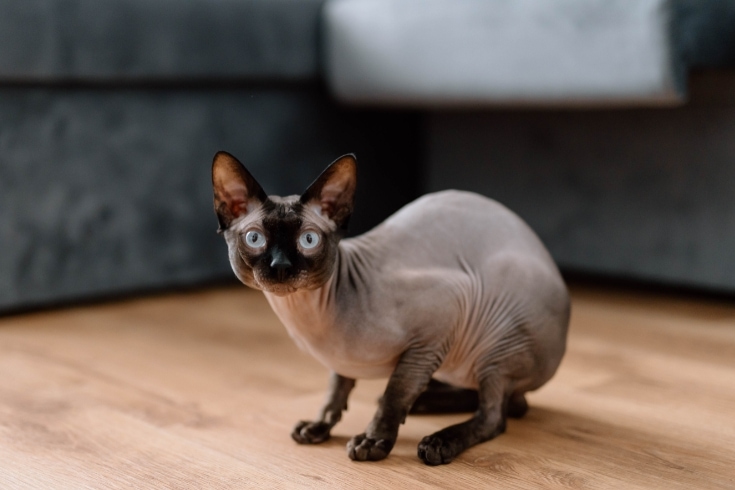
Physical exercise and play stimulate the release of endorphins in the cat’s brain, promoting a sense of well-being, reducing anxiety and stress, and getting rid of excess energy that could leave your cat frustrated.
Promotes Mental Stimulation
Cats are highly intelligent creatures that need plenty of mental stimulation to stop them from getting bored and keep their minds sharp. A bored cat can develop destructive behavioral problems, such as scratching your furniture, which can be an issue with indoor cats that don’t have access to the outside.
You can help to keep your cat mentally sharp by providing her with plenty of exercises and games that can also form part of your behavioral training program.
Enhances Overall Health And Well-Being
In addition to keeping obesity at bay and preventing boredom and psychological problems, exercise contributes to your cat’s overall health and well-being by boosting her immune system, improving digestion, and supporting cardiovascular health.
What Are Different Types Of Exercises That Cats Can Do?
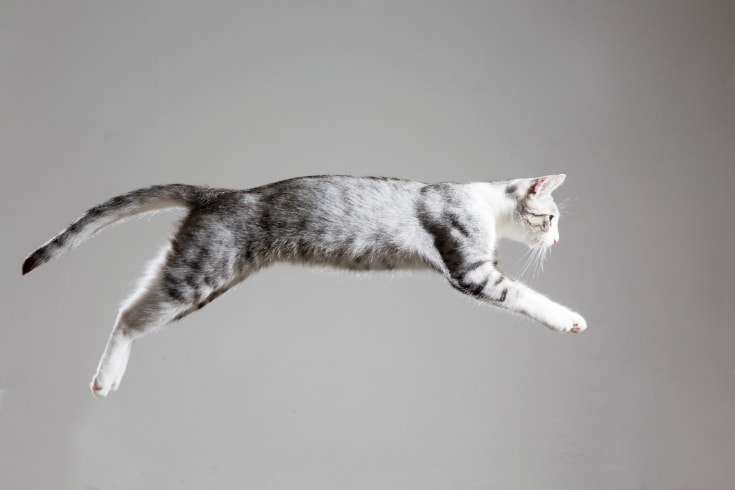
Different types of cat exercises are introduced in the following list, and there’s something here to suit cats of all ages!
Some of the exercises involve jumping, running, and pouncing, and some gentler activities would suit older, less mobile cats, such as solving interactive food puzzles, bubble popping, and even water fountain pawing. So, you’re bound to find something here that’s perfect for you and your pampered pussycat!
Choose a time of day when your cat is well-rested, fed, and ready for a game. That way, your cat is more likely to have plenty of energy and is less likely to lose interest in her exercise session.
So, without further ado, let’s start burning up those kitty calories!
Laser Pointer Chasing
For this exercise, you will need a laser pointer device that you will find in most good pet stores.

Your cat will get plenty of exercise chasing the red dot of light produced by the pen. My cats love this game and even hook the pen down off the coffee table to encourage me to play with them!
- Choose a place for the game to be played. You’ll need somewhere spacious and free from too many obstructions.
- Turn out the lights so that your cat can see the laser light clearly.
- Point the device to the ground and press the button to activate the light.
- Move the light around the room so that your cat chases it.
Be careful that you don’t point the device directly at anyone’s eyes, including your cat’s; a laser light can cause blindness if you look right at it!
Wand Toy Jumping
You’ll need a wand toy to play this energetic game.
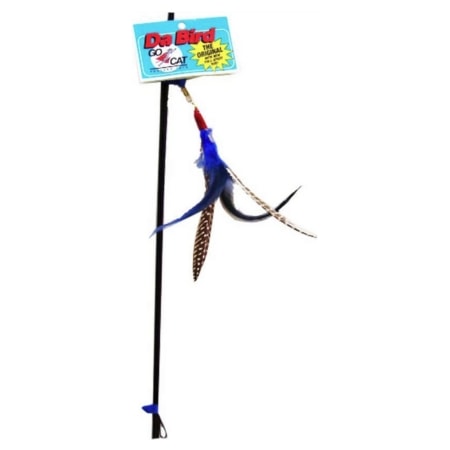
Here’s another game that my cats love! The wand is kind of like a fishing rod with feathers attached to the end of a long line. You wave the wand, and the feathers move around like a real bird!
- Choose a spacious area for this game, either indoors or outside in your garden.
- Gently move the wand so that the feather “bird” flies around in a circle for your cat to chase.
- You can make the game more challenging by making the bird fly higher so your cat can jump to catch it.
Ball Fetching
There are lots of different cat balls to choose from for this game, so why not buy a variety pack?
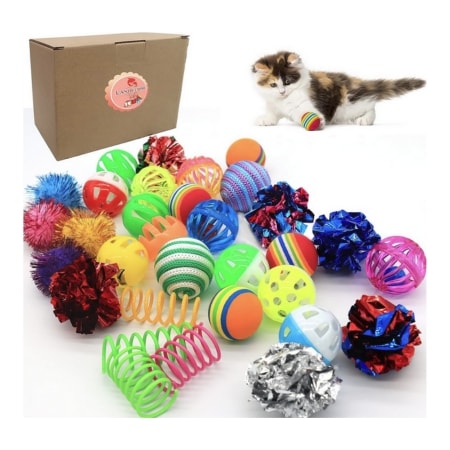
Did you know that your feline friend can learn simple tricks, including ball fetching? This game is simple; you throw the ball, and your cat fetches it back to you.
- Choose a ball that your cat loves to play with.
- Ensure your cat has seen and is interested in the ball in your hand.
- Roll the ball a few inches away from your cat and encourage her to fetch it.
- Remember to reward your cat with praise and treats when she brings the ball to you.
Interactive Food Puzzles
If you have a cat that’s older and less active or one that’s very food-motivated, an interactive food puzzle can be the ideal tool to encourage her to exercise more.
There are lots of suitable puzzle toys to choose from, so be sure to pick one your cat finds achievable and interesting.
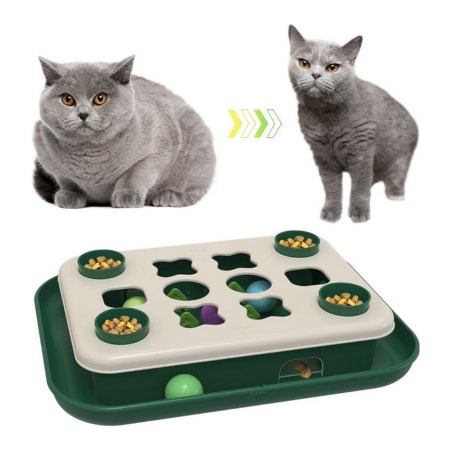
Puzzle toys vary in design but have the same basic premise: the cat has to work out how to find the treats hidden inside the toy.
- Take some of your cat’s favorite treats and offer one to your cat.
- Allow your cat to investigate the toy before you load it with treats.
- Put a treat inside the toy, showing your cat where you “hid” the reward.
- It might take a few attempts before your cat works out where to find her treats, so be patient and encouraging.
- Once your cat gets the idea, put a few treats into the puzzle, and let her solve it.
Treat Hunting
All you need for this simple game are some of your cat’s favorite treats.
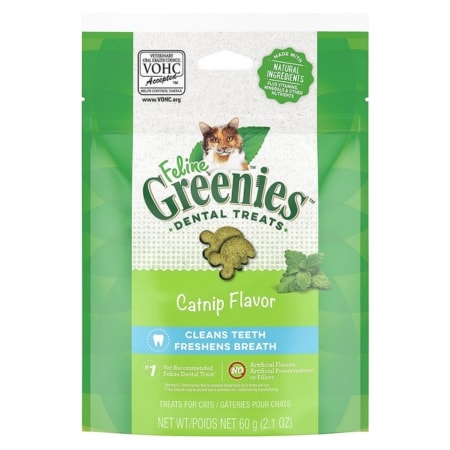
This exercise encourages your cat to use her sense of smell to locate treats hidden around your home or garden.
- Take a few of your cat’s favorite treats and offer her one.
- Now, take a few treats and hide them in places around your home.
- Show your cat where you hid the first treat, and help her to find the next one. Once she gets the hang of the game, your cat will exercise herself by looking for the treats you’ve hidden.
Feather Toy Pouncing
This game requires a simple feather toy.
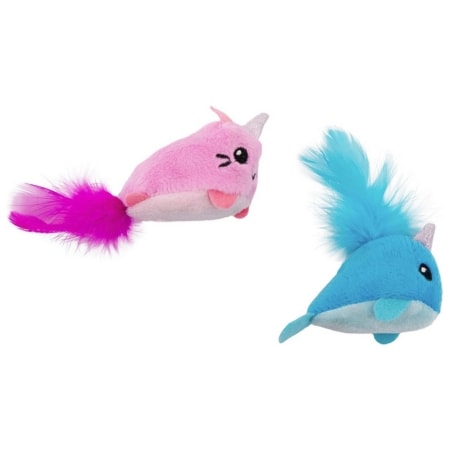
The idea of the exercise is that the cat bats and swats the toy with her paw, pouncing on it when it moves.
To play the game, simply put the feather toy on the ground and encourage your cat to play with it.
Catnip Toy Batting
For this game, you’ll need a catnip toy. Again, there are plenty of different ones to choose from, so just pick a toy that appeals to your feline friend.
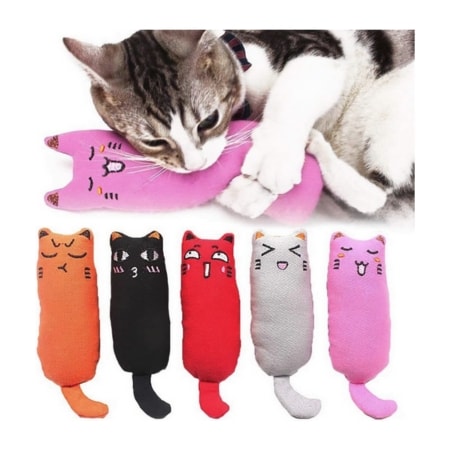
Catnip sends many cats crazy! This game involves encouraging your cat to play with the catnip-infused toy, perhaps by tossing it for her so that she bats it with her paw.
- Show the toy to your cat and let her sniff it.
- Place the toy on the ground or on your cat’s scratching post perch.
- Now sit back and watch your cat batting the toy!
Agility Course Running
You’ll need a few obstacles for your cat to negotiate in this game that demands agility, fitness, and athleticism from your cat.
As you can see from this Youtube video, you can create a DIY course from household items or buy a simple course designed for a dog.
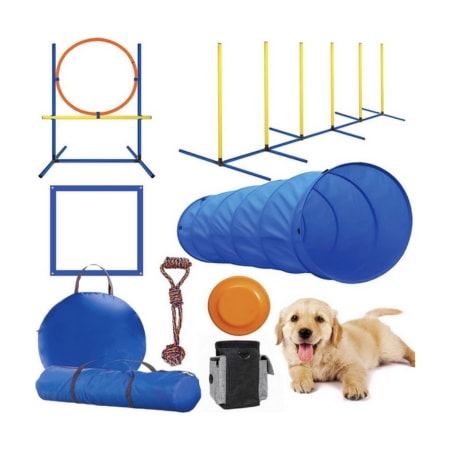
The idea of agility course running is to get your cat to negotiate a few simple jumps, a tunnel, and perhaps some steps to get her joints moving and raise her heart rate.
- Set up the course
- Allow your cat to familiarize herself with the agility equipment, always talking encouragingly to her.
- Offer your cat a tasty treat to get her attention.
- Lead the cat over the first obstacle by luring her with the treat.
- Repeat the process with the next obstacle, and continue until you have reached the end of the course.
- Go back to the beginning and start again, remembering to treat your cat and praise her after each obstacle.
Climbing Cat Trees
For this exercise, you will need a cat tree, which could also double as a scratching post.
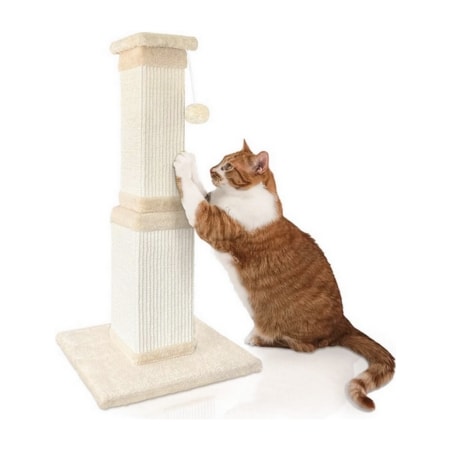
The aim of this exercise is to have your cat climb to the top of the scratching post. Climbing is a natural cat behavior that you will see outdoor cats performing, using trees, fences, and the like.
- Allow your cat to investigate the scratching post, using treats or catnip if necessary to pique her interest.
- Try placing a few treats on the perch to encourage your cat to climb up the post to reach them.
- Since most cats love climbing, you shouldn’t have too much trouble persuading your feline friend to carry out this game.
Tunnel Exploring
For this exercise game, you will need to build a tunnel for your cat to explore. You can buy a purpose-made tunnel that often comes as part of an agility set, or simply create one from a cardboard box.
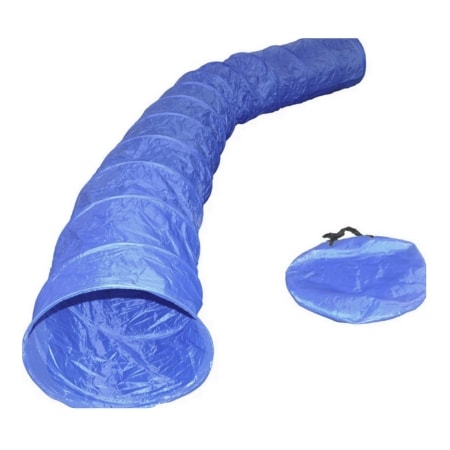
Cats are very curious and like to explore dark, narrow spaces, so going through a tunnel is no big deal for them. Essentially, this exercise demands your cat to run through a tunnel.
- Set up the tunnel and allow your cat plenty of time to investigate it.
- Take some of your cat’s favorite treats, and scatter a few in the tunnel.
- Encourage your cat to enter the tunnel to get a treat reward, and praise her when she does.
- If your cat is reluctant to go into the tunnel, it sometimes helps if you position yourself at the other end so that your pet can see you when you call her.
Water Fountain Pawing
Cats are curious creatures, and many will play with water, provided they don’t get completely soaked!
If you have a water fountain to keep your cat hydrated while you’re not around to top up her water dish, you can also use it to exercise her.

The idea of this game is for your cat to reach out and paw at the jet of water that’s gently falling from the fountain.
- Set up the water fountain and allow your cat to explore it.
- If your cat doesn’t immediately start pawing at the water, you can encourage her by gently taking a paw and using it to touch the water jet.
- Reward your cat with praise and treats when she does what you want, and keep repeating the exercise until your furry friend will pat the water on her own.
Box Or Bag Investigating
This simple game doesn’t require any expensive equipment, and you can create what you need from things you will already have around your home. That said, there are a few cute cat box ideas on the market you might like to buy, especially if you have kids.
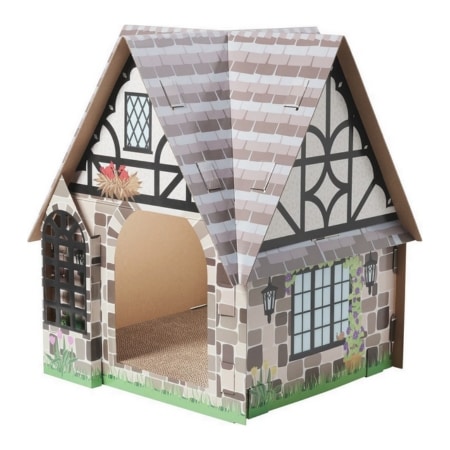
All you need for this exercise is an empty cardboard box or a large paper bag, which you’ll likely already have hidden away in a cupboard in your home. Don’t use plastic for this game, as that could present a danger of suffocation to your pet.
- Place the bag or box in the center of the room, and leave your cat to investigate it.
- Most cats will dive right in without hesitation, but you can add to the temptation by tossing a few treats inside.
Stuffed Mouse Dragging
If your cat catches a real mouse in your backyard, she will carry or drag it, often right through your catflap and release the terrified critter into your home! This exercise harnesses that natural hunting instinct without harming anything living or giving you heart failure!
For this exercise, you’ll need a stuffed mouse, ideally, one you bought from your local pet store rather than a rodent your cat prepared earlier!
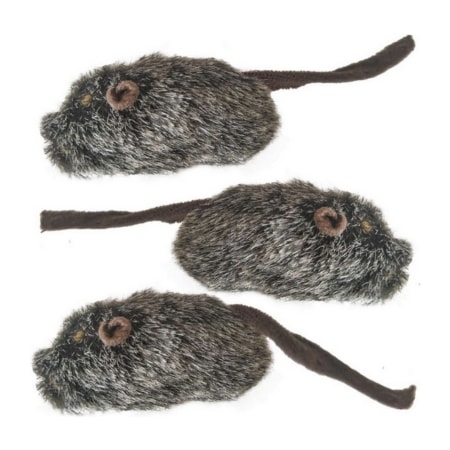
- Introduce your cat to the stuffed mouse toy and encourage her to play with it.
- Many toy mice are filled with catnip, so your furry friend will probably not need much encouragement!
- Make the game more challenging for the cat by asking her to drag the mouse through a tunnel or onto her scratching post perch.
Sisal Ball Rolling
Cats enjoy playing with sisal since it makes a great surface on which to sharpen their claws. Instead of a scratching post, a sisal ball can make an excellent exercise tool and sharpening surface.
For this exercise, you’ll need to invest in a sisal ball.
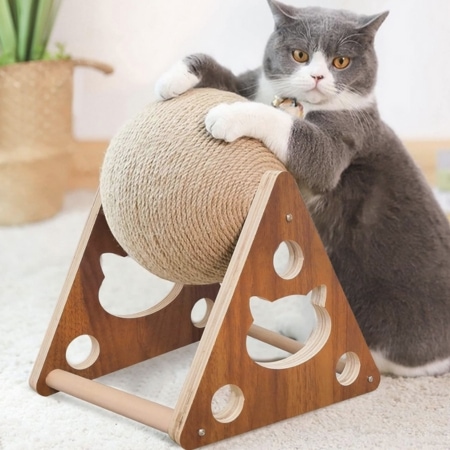
Basically, the cat reaches up onto the ball and rakes her claws down the sisal coating, turning the ball as she does so.
- Allow your cat to sniff and acclimate herself with the sisal ball.
- If your cat is reluctant to play with it, you could try rubbing a treat over the ball or sprinkling it with catnip.
- Praise your cat and give her a treat when she puts a paw on the ball.
- Eventually, your cat will start sharpening her claws on the ball routinely, exercising herself in the process.
String Chasing
Cats love string, so this is a wonderful exercise your cat will catch onto quickly.
Any string or ribbon will do for this exercise, provided it’s in good condition and not too frayed.
Top tip: You might find your cat will be more interested in playing with a brightly colored ribbon rather than a plain piece of brown string.
Never allow your cat to play with string unsupervised, as there is a danger she could choke.

- Take the string or a length of ribbon and drag it across the floor in front of your cat.
- Your feline friend will probably dive on the string and chase it right away!
- Make the exercise more difficult by pulling the string more quickly.
Bubble Popping
Bubbles make a fabulous cat toy, provided you use animal-safe ones that won’t harm your pet.
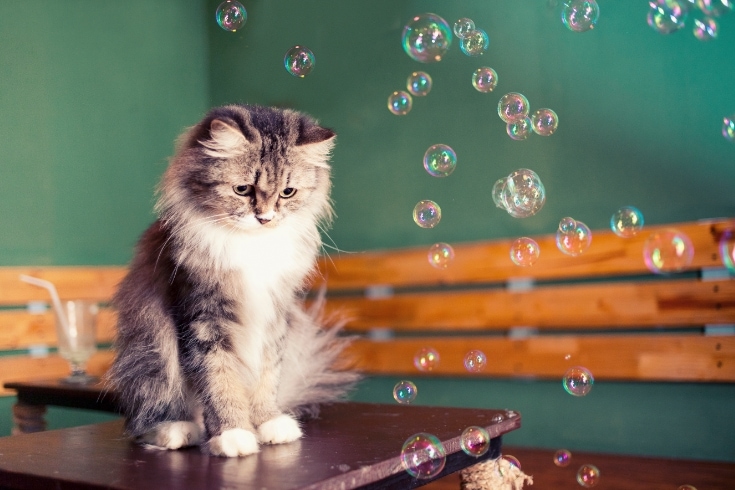
This game can be played indoors or outdoors in a spacious area where your cat has plenty of room to jump and spin.
- Use the toy to create a stream of bubbles for your cat to chase.
- When your cat catches a bubble, praise her and give her a treat.
- Repeat the game, making it more challenging by having your cat leap up to grab the bubbles as they float in the air.
DIY Obstacle Course Navigating
If you don’t want to spend money on a commercially produced agility course, you can make your own using household objects.
Try repurposing cardboard boxes, bamboo canes, plant pots, paper bags, and the like to create “hazards” for your cat to negotiate in return for a treat.
- Choose several objects to create the obstacle course.
- Set up the course and allow your cat to investigate.
- Using a narrow corridor or hallway for the course is helpful to make it more difficult for your cat to dodge the obstacles.
- Encourage your cat to move down the course of obstacles by luring her with a treat, and praise her when she gets it right.
Paper Ball Batting
Here’s another money-saving exercise that doesn’t require expensive equipment; all you need is a ball made from scrap paper or scrunchy tissue paper.

The object of this exercise is to have your cat bat the paper ball and chase it around the room. You can even try throwing the ball up onto your sofa or bed to make the exercise more challenging for your cat.
- Show your cat the paper ball to get her interested in it.
- Toss the ball across the room to see if your cat will chase after it. If your cat is reluctant to join in the game, try rubbing a treat on the ball or sprinkling it with catnip.
- Make the game more challenging by tossing the ball onto a chair or bed so the cat can jump up to get it.
Window Bird Watching
A house cat can get a surprising amount of exercise simply by sitting on a windowsill and watching the birds outside.
My cats love to sit on a comfortable piece of padded Vetbed in the sun. Vetbed has a non-slip backing and can be cut to size, so your cat will never be in danger of tumbling embarrassingly off the windowsill while engrossed in bird-watching!
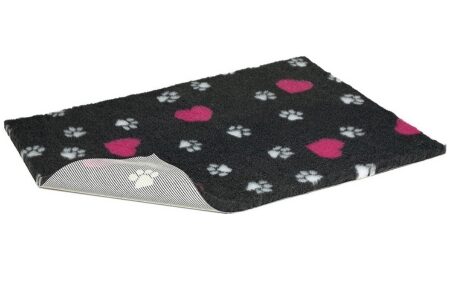
- Tempt your cat to sit on the windowsill by offering her a treat.
- Try attracting birds for your cat to watch by hanging feeders in the trees opposite.
- Many cats, including mine, get lots of mental stimulation by watching the birds flitting back and forth.
Clicker Training Tricks
A clicker is a small handheld device that makes a clicking sound when pressed, and many cat and dog owners use clicker training to teach their pets basic and even advanced tricks and commands.
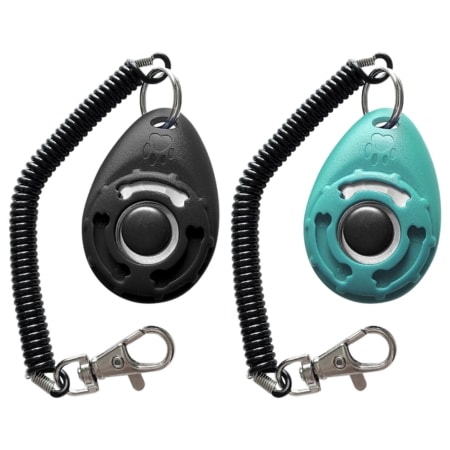
- Ask your cat to perform a simple command, such as following a treat lure.
- As soon as she responds with the desired behavior, click the clicker and simultaneously reward your cat with a treat and plenty of praise.
- Eventually, the cat learns to associate the sound of the click with receiving a treat, making her more likely to repeat the behavior in the future.
Tissue Paper Scrunching
Cats have an acute sense of hearing. In fact, your cat’s hearing is many times better than yours and your dog’s, enabling her to detect the tiniest sound made by a mouse scurrying through an underground tunnel or in long, dense grass. So, it’s no surprise to learn that cats love noisy toys, especially those that squeak or rustle.
Tissue paper makes a great DIY toy that you can use to encourage your cat to exercise.

Here are some ways of using tissue paper to create an excellent DIY cat toy.
- Take a piece of tissue paper and scrunch it up into a ball.
- Toss the ball for your cat to chase and retrieve.
- Scrunch up some tissue paper and put it into a box with a few treats hidden inside.
- Your cat can exercise her mind and body, rooting through the tissue for the food.
Cat Dancer Chasing
A cat dancer toy consists of a spring steel wire with rolled cardboard at one end. The toy is designed to simulate your cat’s natural playing instincts of chasing and hunting, encouraging her to exercise.
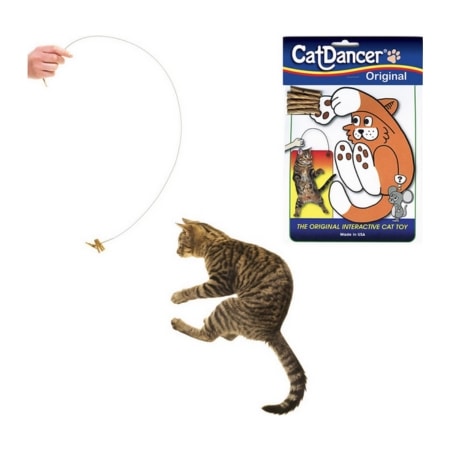
- Encourage the cat to sniff the new toy and familiarize herself with it.
- When your cat shows some interest in the toy, reward her with a treat.
- Throughout the game, keep rewarding your cat with treats and praise.
Yoga Ball Rolling
Your yoga ball can make an excellent cat toy provided your pet’s not afraid of the huge object!
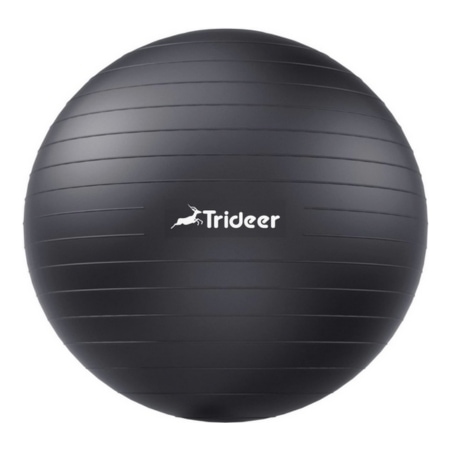
Basically, you want to encourage your cat to push the ball along using her body. Be warned, though, some cats take to this game very quickly, while others won’t entertain it at all.
- Give your cat a chance to check out the yoga ball and give it a thorough sniff. Praise your pet and reward her bravery with treats.
- If your cat is not afraid of the ball, push it gently away from you and use a treat lure to encourage your cat to follow.
- Repeat the exercise using your clicker if you have one, and remember to reward your cat each time she follows the lure.
- Eventually, your cat should start to push the ball along herself in return for a click and a treat.
Touch And Reward Training
For this exercise, you’ll need a target stick. A target stick is simply a short wand with a ball or similar object placed on one end.
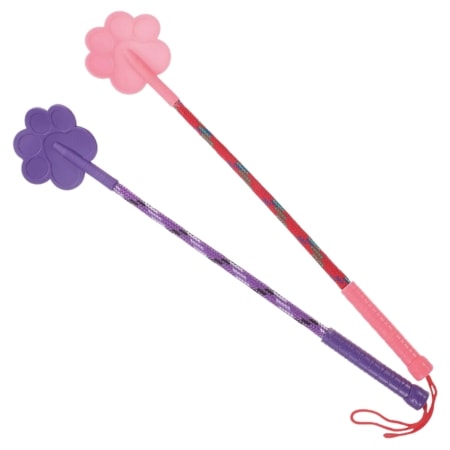
This exercise aims to train your cat to sniff the target stick and follow it in return for a reward.
- Show your cat the target stick and reward her with a treat when she sniffs it.
- If your cat seems disinterested in the stick, try rubbing a treat or some catnip over the target.
- Once your cat is using the target stick correctly, you can use it to encourage your cat to jump onto the sofa, leap through a hoop, or go to a particular place.
Hide And Seek Playing
Cats often enjoy a game of hide and seek with their owners, and this is another easy game that doesn’t require any special, expensive equipment.
- Arm yourself with a pocket full of treats and offer one to your cat so she knows you are the bearer of gifts!
- Start the game by hiding somewhere pretty obvious and calling your cat to come to you. When your pet finds you, reward her with praise and a treat.
- Now, ask a volunteer to hold your cat while you go to hide somewhere else where she cannot see you. Try encouraging your cat to find you by rattling the treat bag, and only call her if she is struggling with the game.
Sock Wrestling
Here’s another game that can give your cat plenty of exercise without needing an expensive toy. All you need for this game is an old sock!
- Roll the sock up into a tight ball and introduce it to your cat. When your cat sniffs the sock, reward her immediately with a treat and lots of praise.
- If your cat is not interested in the sock, try putting a few treats inside it or sprinkling it with catnip.
- Push the sock toward your cat into what I like to call the “strike zone” of her belly. Most cats will now grab the sock and start wrestling with it.
Feather On A String Chasing
For this exercise, you will need a feather toy tied to a piece of string or ribbon or a purpose-made feather wand.
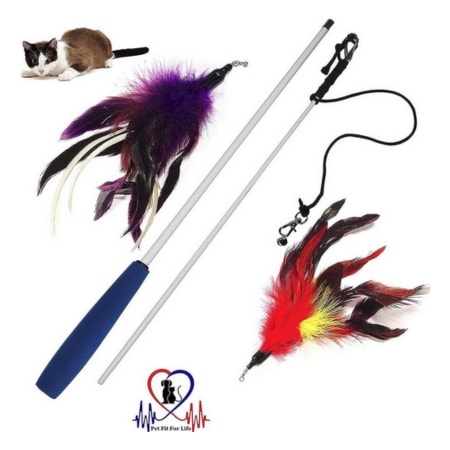
The idea of this game is to get your cat moving by encouraging her to chase the feather. This is a great interactive game that not only provides your cat with valuable exercise but also helps to develop a stronger bond between you.
- Show your cat the feather toy and encourage her to sniff it.
- Reward your cat’s interest in the toy with a treat.
- Now, make the feather “dance” on the end of the string and encourage your cat to chase it, remembering to reward her for her hard work!
Rotating Cat Toy Interacting
There are several interactive rotating cat toys on the market, all of which are great for encouraging your cat to exercise. This toy is especially useful if you are out at work all day and not around to play with your lazy indoor cat!
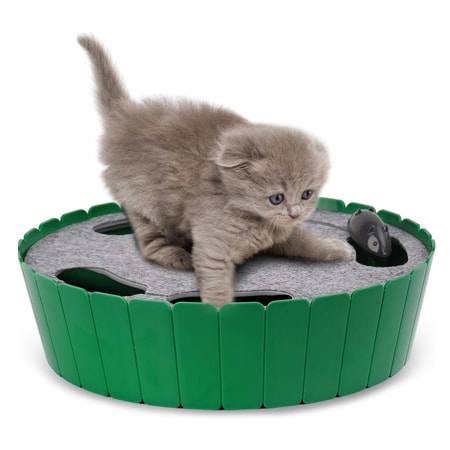
This excellent cat toy features a mouse that randomly pops up through one of the holes as the toy rotates. The idea of the toy is that your cat watches and waits for the mouse to appear before pouncing on it.
- Start by setting up the toy and making sure it works.
- Introduce your cat to the toy and reward her with a treat when she sniffs it.
- All you should have to do now is start the toy up and watch your cat enjoying herself and exercising at the same time.
DIY Catnip Toy Hunting
If you don’t have a catnip toy, you can easily make one using an old glove or sock and putting some dried catnip inside it. If you grow fresh catnip in your garden and your cat hasn’t already destroyed it, pick some and use that instead.
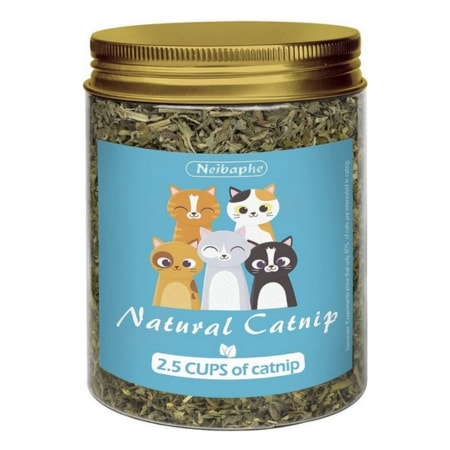
This game encourages your cat to exercise while hunting for the DIY catnip toy.
- Introduce your DIY catnip toy to your cat to get her interested.
- Drag the toy across the floor so that it leaves a scent trail for your cat to follow.
- Hide the toy, bring your cat into the room where the toy is hidden, and direct her to the scent trail you have laid.
- When your cat finds the toy, give her a treat and praise her.
Whack-A-Mole Box Playing
You will need to buy a whack-a-mole box game for your cat to enjoy this form of exercise.
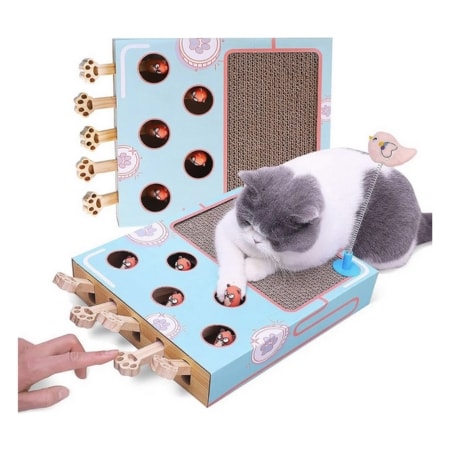
The game involves you pressing one of the paw pads on the side of the box, causing a cute cat to spring up from the game board for your cat to grab.
- Let your cat have a good sniff around the whack-a-mole box, offering her treats to pique her interest.
- Start the game, and reward your cat with a treat each time she pats one of the targets.
- Some cats quickly realize what’s making the target pop up through the hole in the box and take over your role!
Tips For Making Cat Exercises Fun And Engaging
Tips for making cat exercises fun and engaging are invaluable!
Cats are intelligent creatures with short attention spans and can quickly lose interest, so making the exercise fun and engaging is essential.
For example, my cats love interactive play with their laser light and DaBird feather wand, so I never have trouble persuading them to exercise. So, I guess the trick is to find games or toys your cat loves, so she’ll never get bored or reluctant to play.
Here are some top tips for keeping your cat focused on your training and games to ensure your pet gets the exercise she needs.
Use A Variety Of Toys
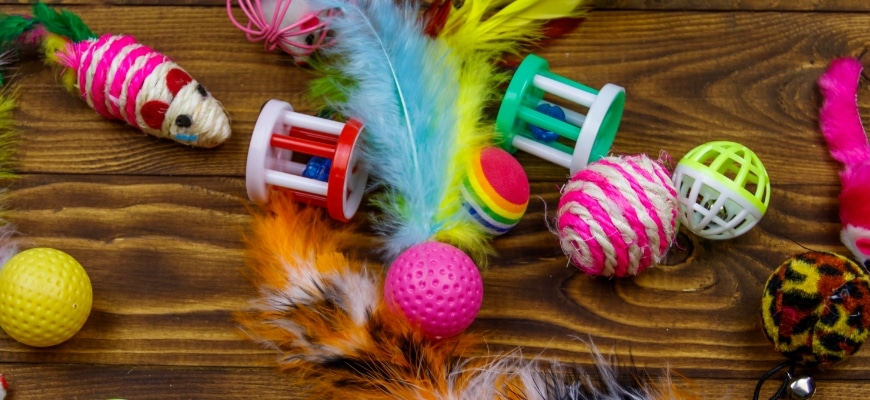
As mentioned earlier, cats are intelligent creatures, and they can get bored quite quickly if you always use the same toy, so work out what kind of toys your cat enjoys playing with and have a selection of them that you can rotate.
Rotate Toys Regularly
Even if your cat has a large selection of different toys and games, you should rotate them regularly to keep exercise sessions fresh and interesting for your pet. That also means the toys don’t wear out too quickly, so you don’t have to keep buying new ones, potentially saving you a lot of cash.
Play In Different Environments
As well as providing your cat with different toys to play with, you can keep exercise sessions fresh by playing with your pet in different environments.
For example, on a bright summer day, you could take the games out into your back garden if you have one, so an indoor cat can enjoy some fresh air and a change of scenery, which will benefit her mental and physical health.
Integrate Training With Playtime
Some games that provide your cat with valuable exercise can be integrated with playtime.
For example, training your cat to use a target stick opens the door to her learning lots of new tricks and commands. So, while training the cat to use the target stick, you could also introduce her to negotiating and obstacle or agility courses.
Use Interactive Toys
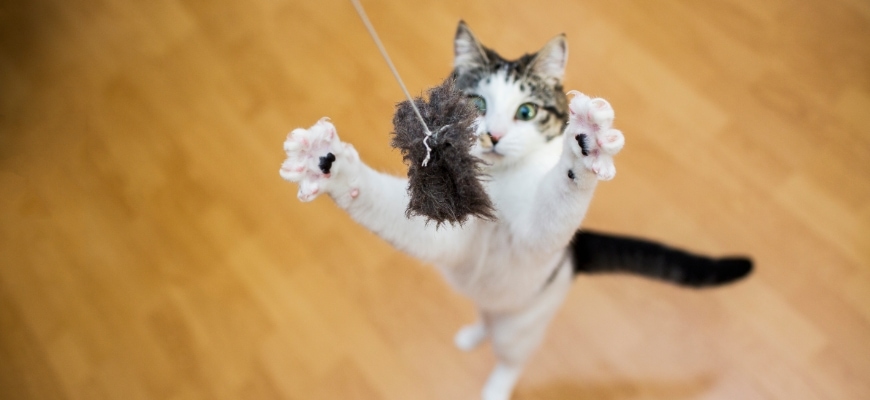
I think the best kind of cat toys are those that require owner and cat participation. playing with your cat usually results in fun for both parties, helps to keep the cat interested and engaged, and promotes better physical and mental health for your feline friend.
For example, my cats love nothing more than a game with the laser pen. Of course, they cannot operate the pen themselves, so I must participate in the game too.
Incorporate Treats As Rewards
Most cats enjoy a tasty meaty treat, and you can use that to encourage your cat to exercise. Cats quickly learn to associate games, training, and exercises with a tasty reward, making them more likely to want to repeat the experience in the future.
For example, you can use a treat as a lure to encourage your cat to complete an agility course, use a scratching post, and play inside a cardboard box filled with scrunchy tissue paper.
Adjust Play Intensity To Cat’s Mood
As we mentioned earlier, cats are independent animals that can show very different moods. Before beginning any play or exercise session, it’s crucial to gauge what mood your cat is in to get the most benefit from the time you spend with her.
On a warm day when your cat has spent the morning snoozing in the sun, choose a low-intensity game, such as a treat puzzle box toy, that doesn’t demand too much of your cats energy but will stimulate her mentally.
Engage In Regular Play Sessions
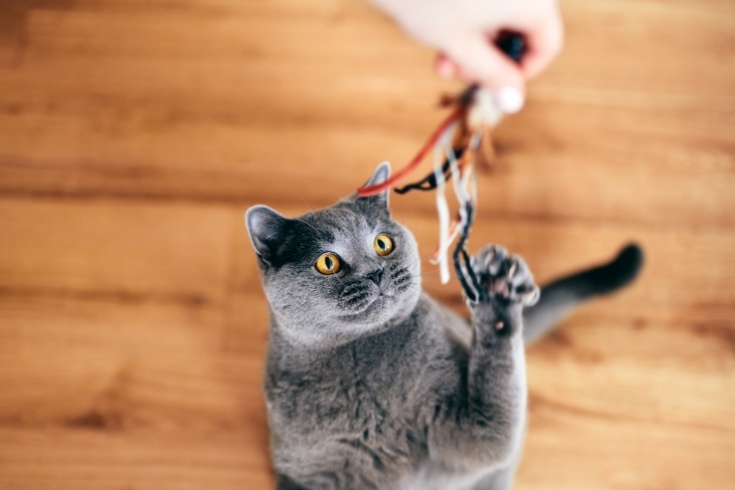
It’s very important to engage in regular play sessions with your cat, like attending the gym yourself!
If you only work out once in a blue moon, you won’t get fit, might put on weight, and will find going to the gym much less appealing than when you joined. It’s a similar situation for your cat if you only play with her occasionally, so be sure to set aside time each day for training and play sessions.
Involve Different Family Members
Training and exercising your cat doesn’t have to be your job alone! Try to involve different family members so that your cat enjoys interacting with the whole family to provide more interest and variety for your cat and to give you a break.
However, be sure that everyone uses the same cue words to avoid confusing your cat and potentially setting back the training process.
Combine Exercise With Mental Stimulation
Cats need mental stimulation as well as physical exercise to remain healthy and in good shape, so be sure to choose a few games that will get your pet thinking, such as whack-a-mole toys.
Senior cats might lack the agility of their younger counterparts, but they still need mental stimulation as they get older, so as your cat ages, remember to adjust her training and exercise program accordingly.
Customize Play To Your Cat’s Preferences
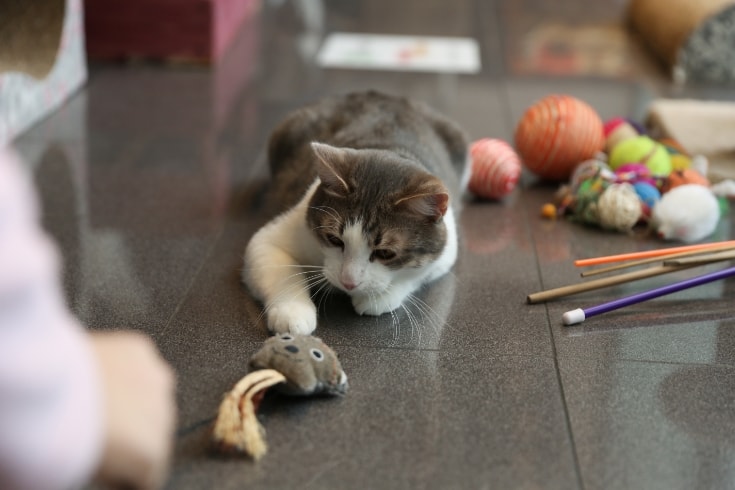
Different cats enjoy playing with different toys, so be sure to customize playtime to your cat’s preferences. That approach helps to keep your cat interested and enthusiastic, so you will both get the most out of playtime.
Try New Games And Exercises Regularly
Keep things fresh by introducing new games and exercises regularly so that your cat doesn’t get bored and stale. You don’t have to buy something from your local pet store; taking the DIY route can be cheaper and just as much fun!
Keep Sessions Short And Frequent
Keep your cat’s playtime and training sessions short and frequent to hold her interest and allow her to recover physically and mentally. Try incorporating exercise sessions into your cat’s daily routine; you will find that works well.
Create DIY Toys For Freshness
Many times, a simple DIY toy is just as exciting for your cat as an expensive shop-bought one, helping to keep exercise sessions and playtimes fresh and interesting.
Take a look around your home, and you’re sure to see items that could double as cat toys, such as discarded cardboard boxes, large plastic bags, and empty cotton reels. Your imagination is the only limit to what DIY toys you can create!
Use Natural Cat Behaviors In Play (Pouncing, Hunting)
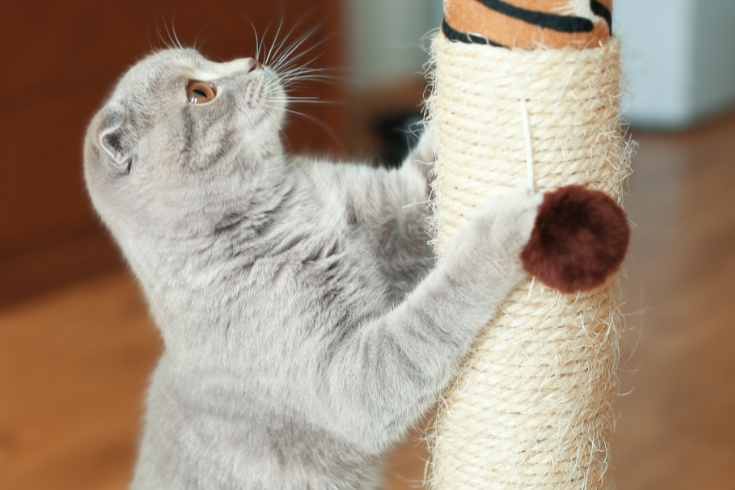
Use your cat’s natural behaviors, such as hunting, jumping, climbing, and pouncing to encourage exercise and play. In fact, many commercially produced cat toys do exactly that, providing both physical exercise and mental stimulation for your pet and generally improving her well-being.
Practice Patience, And Positivity
When training and exercising your cat, always be patient and positive to keep the experience fun and enjoyable for you both. Positive reinforcement is the key to success because the cat learns to associate exhibiting a desired behavior with praise and a reward, making her more likely to repeat that behavior in the future.
Mimic Prey Movements With Toys
Remember to encourage your cat’s natural hunting behavior by mimicking prey movements with toys.
For example, a feather on a string can be used to imitate a fluttering bird. That will trigger your cat’s natural instinct to chase the prey, satisfying her physical exercise needs, relieving stress, and leaving her mentally calmer and more relaxed once the game is over.
Allow Your Cat To “Win” Sometimes

Your cat will get frustrated if she never wins the game, so be sure to allow your pet to catch the bird or mouse and play with it for a while before resuming the hunt. That ensures your cat is mentally satisfied with the results of the game and makes it more likely that she’ll want to play again.
Make Use Of Vertical Space For Climbing
Take a look around your home and look for exercise opportunities for your cat. In particular, you can make use of vertical space for climbing.
For example, if you live in a house with stairs, you could incorporate them into an obstacle course.
Provide Rest Periods Between Play
You must remember to provide rest periods for your cat between playtime, training, and exercise sessions. Rest periods help prevent your cat from becoming tired, over-exerting herself, risking injury, and becoming bored.
So, factor in a five or 10 minutes break every 15 minutes or so, depending on your cat’s age, fitness level, and the nature of the game you’re playing. Obviously, more strenuous exercise demands longer rest periods than a gentle game.
FAQs
Here are the answers to some of the most frequently asked questions about cat exercises and their benefits to add to the information we’ve already provided for you above.
How Much Exercise Does My Cat Need?
The amount of exercise your cat needs varies depending on several factors, including your pet’s age, breed, and overall health.
However, adult cats typically benefit from around 20 to 30 minutes of moderate exercise every day, while kittens and younger cats need more playtime to burn off their excess energy, and senior cats can enjoy 15 minutes or so of gentle exercise to keep their joints mobile and their brains active.
How Can I Motivate My Cat To Exercise More?
You can use your cat’s natural instinctive behavior to motivate her to exercise more.
For example, cats are natural hunters, and using interactive toys that mimic prey movements can be highly motivating. Toys such as laser pointers, feather wands, and treat dispensing puzzles all make excellent toys for encouraging your cat to exercise, especially if you join in with her.
Is It Safe To Take My Cat For A Walk Outside?
It can be safe to walk your cat outside if you do it properly.
Start by training your cat to wear a correctly fitted harness and leash specifically designed for cats, and then teach her to walk with you. When walking your cat outside, be aware of potential hazards, such as other animals, traffic, and toxic plants, and if your cat appears uncomfortable or distressed at any time, take her back indoors right away.
How Can Playtime Be Considered As Exercise For Cats?
Playtime can certainly be used to encourage your cat to exercise by engaging your pet’s natural instincts to stalk, chase, and pounce. Don’t forget that cats need mental exercise too, and some toys, such as interactive puzzle games, can provide that stress-relieving outlet for your pet.
Regular playtime can help to maintain a healthy weight, prevent obesity and boredom, and can strengthen the bond between you and your furry friend, so it’s an important part of your cat’s routine.
How Can I Incorporate Exercise Into My Cat’s Daily Routine?
Incorporating exercise into your cat’s daily routine is relatively easy to do especially if your cat spends some of her time outside, climbing trees and jumping on and off fences in your backyard.
You can incorporate exercise into an indoor cat’s day by choosing a time when she is most active, using interactive toys, and playing with her.
Can Overweight Or Older Cats Still Do Exercises?
Yes, an overweight or senior cat can still benefit from regular exercise, although it’s vital to start slowly and choose low-impact activities for your pet to reduce the risk of injury or over-exertion.
Focus on providing gentle play sessions and exercises that will not strain your cat’s joints, such as chasing a toy or walking on a flat surface.
What Precautions Should I Take When Exercising My Cat?
You should take several important precautions when exercising your cat, including being mindful of your feline friend’s energy level and not forcing her to exercise if she appears tired or uninterested.
Before you begin exercising your cat, be sure the environment is safe and free from hazards, and avoid using small objects that your cat could potentially swallow and choke on.
How Can I Tell If My Cat Is Getting Enough Exercise?
You can tell that your cat is getting enough exercise because she will have a healthy weight, be relaxed and content following playtime sessions, and not display signs of boredom, including undesirable behaviors like scratching your furniture.
Is It Possible To Over-Exercise My Cat?
Yes, it is possible to over-exercise your cat, especially if she has health issues or is very young or old.
To prevent over-exertion, monitor your cat’s behavior closely throughout and after playtime, and if she seems exhausted, is panting excessively, or is reluctant to move, she could have overdone things.
What Are Some Signs That My Cat May Be Over-Exerting Itself?
Some signs that your cat might be over-exerting herself can include excessive panting, drooling, lethargy, and a reluctance to play altogether. If you spot any of those signs during a training or play session, immediately give your cat a break, and consult your veterinarian if your cat does not recover within five to ten minutes.
Can I Train My Cat To Use Exercise Equipment Like A Treadmill?
Although, in theory, it is possible to train a cat to use a treadmill or other similar exercise equipment, it’s generally not a common practice for cats. Cats are far more likely to engage in natural play behaviors if you use interactive toys, and your cat will get plenty of exercise while having fun and playing with you than she will on a treadmill.
Conclusion
With cat obesity on the rise, cat exercises are absolutely vital for your cat’s health, preventing weight gain, keeping your cat fit and agile, and helping to keep her mind active.
You can use many different exercises, games, and training ideas to keep your cat physically and mentally fit, such as chasing a ball, climbing stairs, hunting a feather lure, and chasing a laser pointer light.
Keep your cat’s exercise routine interesting and fun for your pet by regularly rotating her toys, choosing different environments for exercise sessions, using a wide range of toys, and working out what kind of exercises your cat enjoys the most. Take care not to over-exert senior cats and kittens, and be sure to choose games that suit your cat’s preferences.
We’d love to know how to ensure your cat gets plenty of exercise and stays fit. Tell us what games and tricks you’ve taught your feline friend in the comments box below!